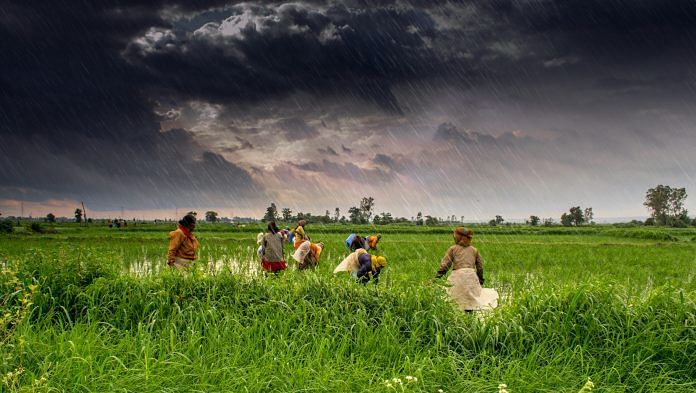Arun Jaitley seemed to make a grand declaration as if he was fulfilling a manifesto promise. But he just shifted the goal posts with Budget 2018.
Lack of political will writ large, is the takeaway from the Union Budget 2018-19.
There were many reasons to expect something big for the farmers in this Budget. First, even the Economic Survey had acknowledged that agriculture was ill, that farmers’ income was stagnant, and they were exposed to greater risks in future.
Second, farmers’ agitations in different parts of the country in the last six months had made their anger quite evident.
Third, the results of Gujarat elections had sent a clear signal about the political consequences of rural distress. If nothing else, sheer electoral calculation demanded that the government offer some sops to the farmers in this Budget.
There was some speculation in the last few weeks to back it up. There were many reports about Madhya Pradesh’s Bhavantar Yojana being implemented at the national level. There was the central government’s proposal to implement the ‘Market Intervention Scheme’ in collaboration with state governments. Many thought that the government may announce a conditional and partial loan waiver. And there was the long pending demand and BJP’s own manifesto promise of delivering ‘cost-plus-50 per cent’ as assured price to the farmers.
Finally, everything came to a naught, almost. We had devised a ten-item score card for the Union Budget. By the time the finance minister finished his speech, we did not know how to score him. Or what to score him on. Of the ten items critical to Indian farmers, four did not even find a mention in his speech: insurance, crop loss compensation, MGNREGA and irrigation.
When we looked at the detailed budgetary allocation, we realised why. MGNREGA’s allocation is lower than the statutory requirement, which would have required at least Rs 80,000 crore. The allocation for crop loss compensation and irrigation is routine. The performance of the Pradhan Mantri Fasal Bima Yojana is not worth boasting about.
All in all, the budget for agriculture has gone up by about 13 per cent, about the same as the overall budget. So, what justifies this hype about agriculture and farmers? The positive steps announced for animal husbandry and fisheries and the upgradation of gramin mandis are good ideas, provided they don’t meet the same fate as many other hyped initiatives of this government. But that is surely not what the Indian farmers have looked forward to.
For the last eight months, Indian farmers have been struggling and agitating for just two things: remunerative price for their produce, and freedom from debt. This is where the Budget hurts most. There was no declaration on a loan waiver — full or partial, conditional or unconditional. This hurts when the government had recently effectively granted loan waivers to corporates via bank recapitalisation, and has promised to look into similar waivers for small industries.
But the biggest disappointment is the big declaration of farm prices. The minister seemed to make a grand declaration as if he was fulfilling his government’s manifesto promise. He knew fully well that he wasn’t. The Swaminathan Commission had recommended the ‘cost-plus-50 per cent’ formula. The commission clearly said ‘cost’ meant comprehensive cost including paid-out cost, family labour, imputed rent, and imputed interest, just as would mean in case of any commercial establishment. In the technical language of CACP, this comprehensive cost is called ‘C2′. And what is left after this comprehensive cost is deducted from the total price of farmers’ produce, is considered ‘net returns’.
Instead, Jaitley deliberately picked up a partial cost estimate (A2+FL), which is used by the CACP to calculate ‘gross returns’ for the farmers. He knew he could not fulfil his party’s promise of giving ‘cost-plus-50 per cent’. So, he shifted the goal posts. If this was indeed the ‘cost’ his party meant in its election manifesto, why was Modi complaining about the Congress in 2014? If A2+FL is the cost, the UPA regime had indeed delivered it. He knew that this promise wouldn’t mean very much for the farmers except additional 110 rupees for the MSP of paddy. He did not also touch upon the critical question of how the farmers were to effectively secure this MSP.
The message is loud and clear. This government doesn’t understand the tragedy of Indian farmers. It doesn’t want to, for it thinks it doesn’t need to do anything for the farmers in order to win votes.
As far as the farmers are concerned, this Budget is lack of political will writ large. It is now for the farmers to decide if they buy into this. The only other way is struggle.
Yogendra Yadav is national president of Swaraj India. Avik Saha is the national convenor of the Jai Kisan Andolan. Kiran Vissa is the founder of Ryathu Swarajya Vedika.



